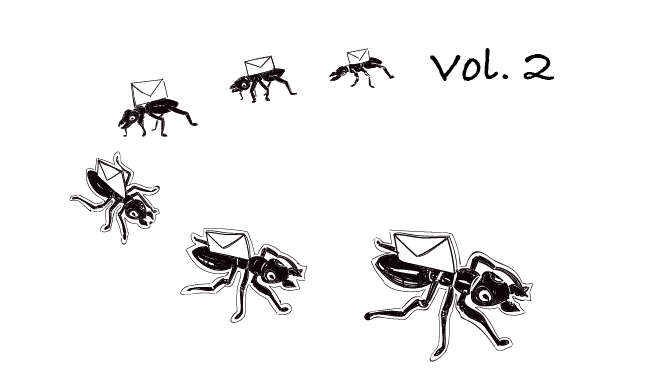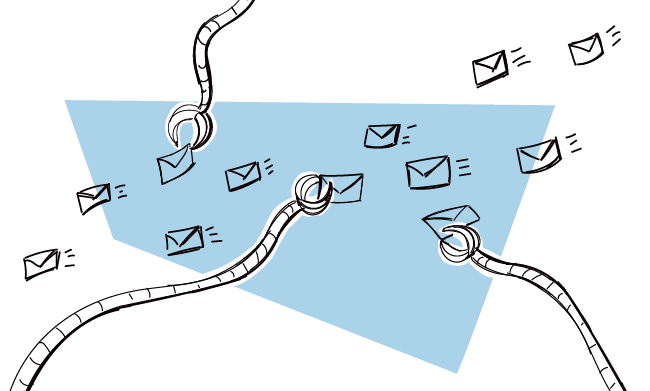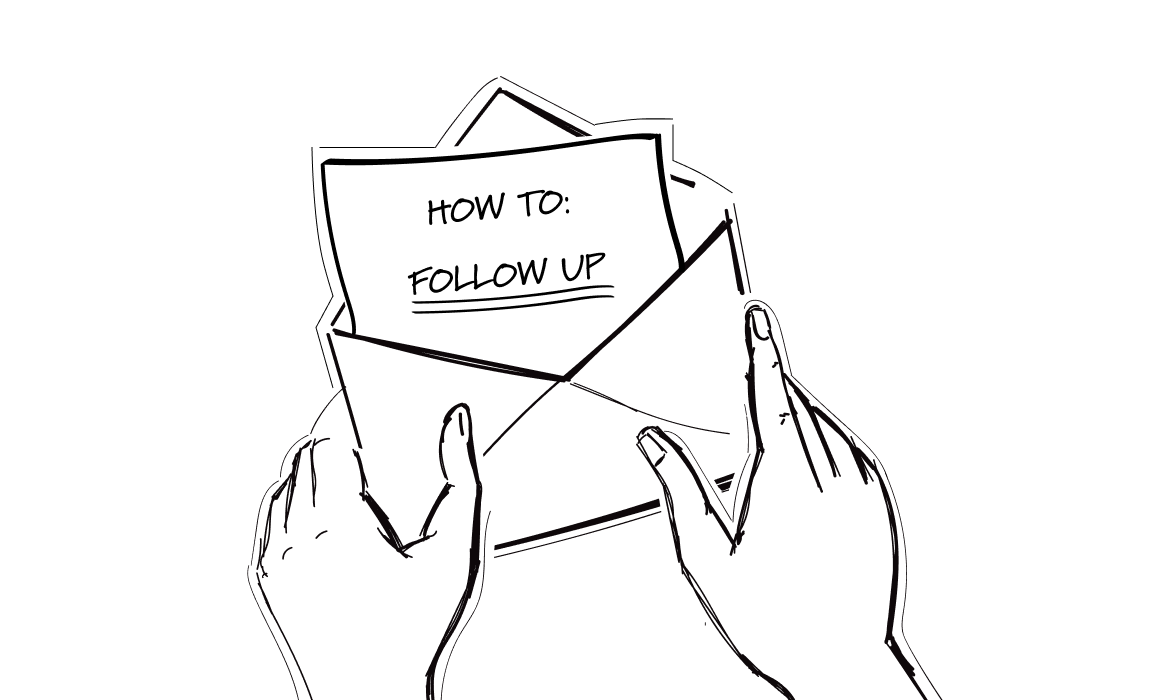We get bombarded every day and half the night with endless requests for our time and attention. And even when we let our guard down for a second and open an email, click on a link or respond to someone somehow trying to get us to listen to them, we are conditioned to expect that 99% of these contacts are insincere, superficial and temporary.
Maybe that’s why follow-up messages after in-person meetings can be so powerful.
In a world that’s constantly buzzing with alarms and notifications and pings and other signals that some kind of message just landed in our inbox for some kind of one-time attempt to get us interested, follow-up messages show that you’re willing to put in the extra time and effort to make a connection.
Whatever the context of the original contact that brought you together — a networking event, a business meeting — follow-up messages sent a day or two later play a crucial role in nurturing the spark that can create valuable relationships.
That’s why we want to focus on why you should use follow-ups in your outreach and how to put together great follow-up messages.
Why follow-up messages matter
Let’s start with the “why” of follow-up messages and a list of the advantages they bring. These are just a few of the benefits of making sure that you always follow up your first outreach message with some kind of gentle reminder that you’re willing and available to keep the conversation going.
Confirm & reinforce first impressions
It’s a great feeling to expand your personal and professional network by meeting others. When a good first impression is mutual, a follow-up message can be just the thing to move things forward and create a permanent contact. It’s like saying “I met a lot of people at the event but I really want to stay in touch with you.” Who can resist that?
Keep the conversation going
You don’t always get enough time to talk to someone you meet at an event and of course it’s not polite to keep someone to yourself anyway. With a follow-up message, you can send a reminder that you’d like to resume your conversation at some point in the future. It says that you are genuinely interested in keeping in touch and value the other person’s input or perspective.
Grow your circle of contacts
There’s nothing wrong with being open about your desire to expand your professional network. After all, there’s a reason they call it networking and everyone does it. If you’re serious about building your network, follow-ups are a must. They can lead to opportunities, partnerships, or deals that may not have materialized otherwise and what’s wrong with that?
Maintain your reputation as a professional
I’m not just talking about knowledge of your field here, but upholding the standards expected in areas where socializing and professional activities overlap. Following up with others, especially those you spend time engaged with, is simply the proper, professional and polite thing to do. It’s like thanking the other person for their time and expressing hope you can all do it again sometime. It makes a great impression on people since they feel flattered to be remembered by you. Want to be seen as a leading professional in your field? Act like one by making follow-up messages part of your routine.
The elements of a good follow-up message after an in-person meeting
Now it’s time for the “how” part of follow-up messages. There’s no perfect text to fit all occasions because the details and context will always vary. Still, there are a few things all good follow-up emails include, like:
Put your subject line to work
A follow-up is a great occasion to let your subject line to do the talking:
Great meeting you at X conference
Right away, your recipient knows the who, what and where of the message. If they met a lot of people at the X conference, they might not recall your face yet, but that is what the rest of the follow-up is for. There’s also an invite there too, creating a kind of obligation to respond. Subject lines are always a challenging part of every email but always be sure that they somehow add value.
Thanks/gratitude
This is where you’ll usually start out, with a nice “thank you” for someone’s time, for being a gracious host, for the great conversation, for the helpful advice they shared, for the lovely dinner party they organized, for bringing so many industry professionals together, for the opportunity to meet other guests or for any number of other reasons.
For most follow-ups, the “thank you” comes right away, as in “Dear X, I just wanted to write to say thank you for…” It’s that easy.
A reference to your previous meeting
You always need to specifically reference the place, event or context in which you met the person you’re following up with. People are busy and some people find themselves in these situations quite often. Sometimes they need a quick reply in their minds to remember the event where you met and the time they spent with you.
Something like “It was great meeting you at the local business networking event at the Expo hall last Friday and talking about your work at Company X” should be enough since your name and company info will also be somewhere in the email but it doesn’t hurt to include some kind of reference to a personal conversation if you had one to be more precise.
Reminding them of the context where you first met not only allows them to recall you but also shows that you were actively engaged and listening during your interactions.
Mention common interests & goals
This may not always apply, depending on the circumstances, but it’s a good idea to continue your follow-up by reminding the recipient about what you learned you have in common — working in the same field, trying to get the same thing accomplished, supporting the same causes, etc.
This is a good way to help anyone who’s still struggling to remember you (it happens), to deepen your connection and to provide a basis for future discussions.
Offer some value
Another step that may not always apply, offering some value accomplishes two things at once.
First, it shows that you’re willing to contribute to the relationship by offering something of value, like contacts, expertise or some other kind of help. It makes the intentions behind your follow-up more genuine since you are willing to invest something.
Second, offering some value helps to more quickly advance your relationship with the recipient to another, closer stage. You’re not just someone thanking them for, for example, hosting a business lunch, you’re providing resources they need to get something done.
Suggest next steps
This will not fit all situations either but, like the previous point, it can move things forward quite a bit.
You can use your follow-up to suggest where to take things going forward. It could be something as simple as setting up a phone call or a meeting without getting into specifics. “Let’s meet for coffee one of these days” is perfectly sufficient to keep things light but still clear that you’re willing to stay in contact.
Of course, you can take things even further with proposals for something more concrete and professionally relevant, like suggesting that someone from your team get in touch with the recipient or asking about the possibility of making a sales pitch or somehow collaborating.
If you use this step at all, the details will depend on how comfortable you are with asking for something and how aggressive you want to be at this stage.
Personalize it
Yes, you’ve already personalized the follow-up to some degree earlier with your thanks and reference to where you met the recipient. They should know who you are already but I’m talking about a different kind of personalization here.
After meeting lots of contacts at an event, you might be tempted to create a one-size-fits-all template and send the same message to everyone. Don’t. Such messages are easy to spot and will immediately kill any goodwill you might have otherwise gained.
Your follow-up isn’t that long so there’s no reason you can create a personal touch with each one. This is the kind of personalization that shows you are sincere in whatever you include in your message and makes a lasting impression of the right kind.
Keep it professional
I mentioned earlier that you might mention a detail from a personal conversation to help your recipient instantly recall meeting you. Of course, I meant “personal” in the sense of one-on-one, not a conversation about your life problems or secret hopes and dreams.
The tone of your follow-up is much like the tone of the event that first brought you together — friendly and probably casual but still within the framework of professional relationships and identities. This is not the place to leave behind the rules of etiquette and proper social interactions. You’re not talking to personal friends here, but to potential professional contacts, partners and more so maintain a tone of casual seriousness when it comes to follow-up messaging.
Keep it short & sweet
One of the great things about follow-ups is that they don’t need to be that long. In fact, if they are long, you’re doing something wrong.
The point of your follow-up is to keep the conversation going. Saying thanks with a reminder about where you met along with an offer of help or suggestion to meet again is more than enough to serve the purpose.
Find more tips on crafting a great follow-up email here.
Make follow-ups part of your outreach routine
In a world where connections are vital, follow-up messages are essential to turning connections into relationships. They allow you to build trust, advance professional relationships, and create opportunities that would have otherwise disappeared without the simple act of following up with someone.
Remember, the art of the follow-up is not just about saying thank you, it’s about nurturing connections and keeping the conversation going. That means always creating a path forward, whether in the form of a phone call, a cup of coffee, connecting on LinkedIn or something else.
Don’t leave anyone with the impression that you have no desire or intention to talk with them again. Always use follow-ups to make sure that every promising brief has a chance to become something more.
READ ALSO

Follow-up Emails: How Many & How Often?
We already know that we need to follow up. We also have an idea of what our follow-up emails should look like. Now, how do we know when to send the follow-up messages? How many of them should we send for optimal results? Where is the line between persistence and stalking?

Follow-up After a Form Submission: How to Convert Inbound Leads Into Sales Vol. 2
Lead forms have become a website staple. They don't require a lot of effort on our part. We just put them up, make sure they comply with GDPR or any other law that's binding in our country and then, reach out to those who filled out a contact form. But do you know how to convert leads who submitted a form into customers? Keep reading to learn how to do that.

How to Avoid the SPAM Folder?
When you send out an email, it goes through a series of SPAM-filtering tests that determine whether it will be let through to the inbox. And sure, this doesn’t really stand in the way of your email getting through when you want to just grab a coffee with friends (unless there’s 500 of them and you’re emailing them all at once with the same message), but it might prove problematic when you’re reaching out to prospects or clients and your messages keep being mistaken for SPAM. See how to make sure your emails are getting exactly where you want them to - to the contact’s main inbox.
